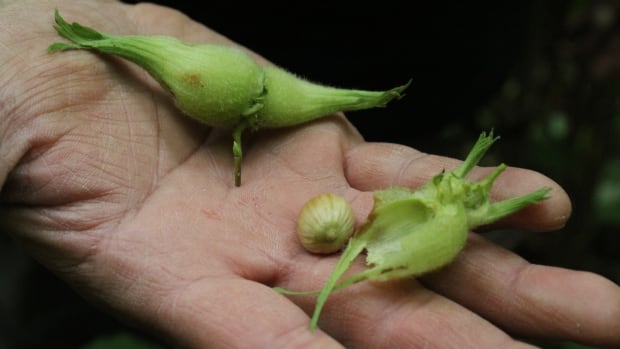Study finds Indigenous people in B.C. cultivated hazelnuts 7,000 years ago, challenging modern assumptions
The hazelnut tree has long been a part of the landscape in parts of British Columbia. A 19th-century settler gave the village of Hazelton in northern B.C.’s Skeena region its name because of the abundance of hazelnuts in the area.
A new study published in the Proceedings of the National Academy of Science indicates Indigenous peoples in B.C. had been cultivating the beaked hazelnut for thousands of years, which researchers say challenges the notion that pre-colonial Indigenous people in northwestern B.C. were only hunter-gatherers.
The findings indicate hazelnuts had been transplanted and cultivated for at least 7,000 years by Gitxsan, Tsimshian, and Nisga’a peoples.
Study co-author Chelsey Geralda Armstrong, assistant professor of Indigenous studies at Simon Fraser University, says the research emphasizes Indigenous peoples’ contributions to the creation and maintenance of the region’s ecosystems and “cuts through assumptions of B.C. and the Northwest Coast being wild and completely untouched.”
“We’ve known for a long time, and in fact, a lot of Indigenous communities know, that Indigenous stewardship practices helped shape plant species distributions and kept populations of salmon healthy, all of that,” Geralda Armstrong said.
“So, our research is adding to that by challenging the dominant narrative, which is that, ‘Oh yeah, this hazelnut is wild, and it’s just growing here.'”
For the study, researchers sequenced the DNA of more than 200 hazelnuts and found five genetic subgroups, many of which could be traced to locations far apart from each other, indicating the nuts weren’t distributed naturally through birds and squirrels but through concerted efforts by Indigenous peoples.
The study also highlights linguistic evidence, noting that the word for “hazelnut” used by the Gitxsan and Nisga’a in the northwest was borrowed from Coast Salish territories in the south, suggesting a trade in nuts.

Geralda Armstrong says the research also feeds into larger questions about the Skeena River as a “civilization epicentre that few people really are aware of.”
“When you’re driving from Prince Rupert to Terrace, there’s nothing in between,” she said. “But 2,000 years ago, there would have been a mega-city or village on every single tributary,” she said.
Jacob Beaton, a Tsimshian man and executive director of the Indigenous Food Sovereignty Association, says he was excited by the findings, which align with oral histories about Temlaxam, a city — according to the study — near the confluence of the Skeena and Bulkley rivers.
He says the study shows that hazelnuts seemed to have spread from the historical location of the ancient city.
“[It’s] amazing because that means that we have modern science supporting oral histories because the city is in the oral histories of all the Sm’algyax-speaking people — Gitxsan, Tsimshian, Nisga’a.”
He hopes the study will help support Indigenous peoples’ stewardship over their traditional lands.
He notes that the research could impact First Nations seeking Aboriginal title as the Supreme Court of Canada ruled in 2014 that nations had to prove a long-standing continuous connection to ancestral lands.
“What this is saying is … intentional agricultural-type food production is part of our heritage for longer than ancient Egypt.”


